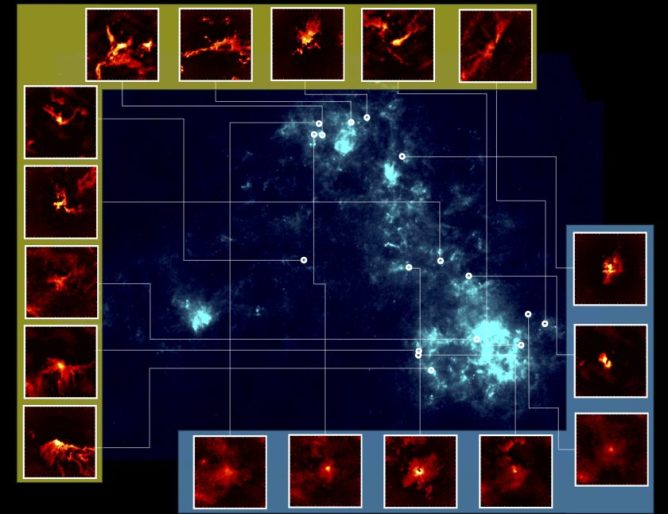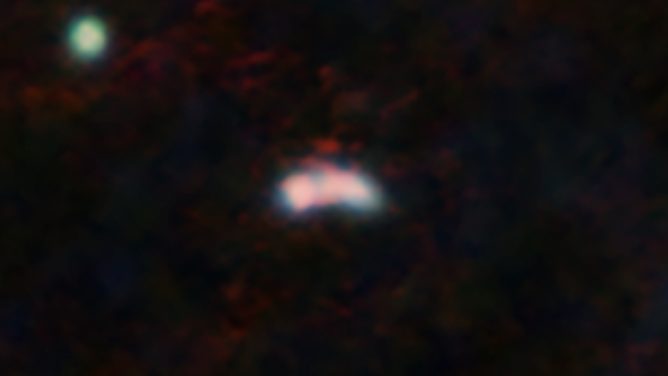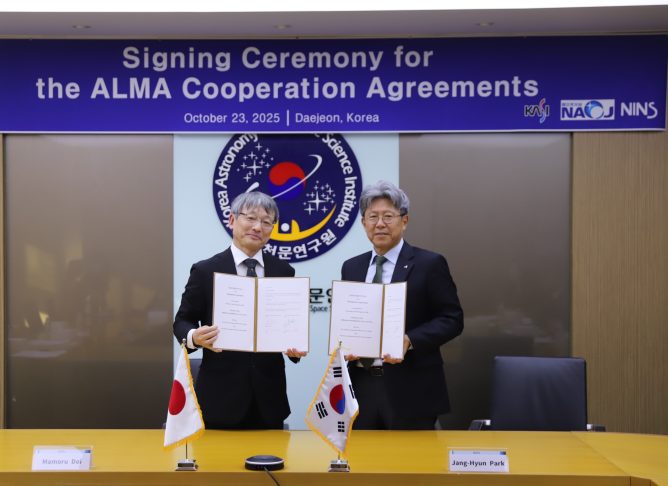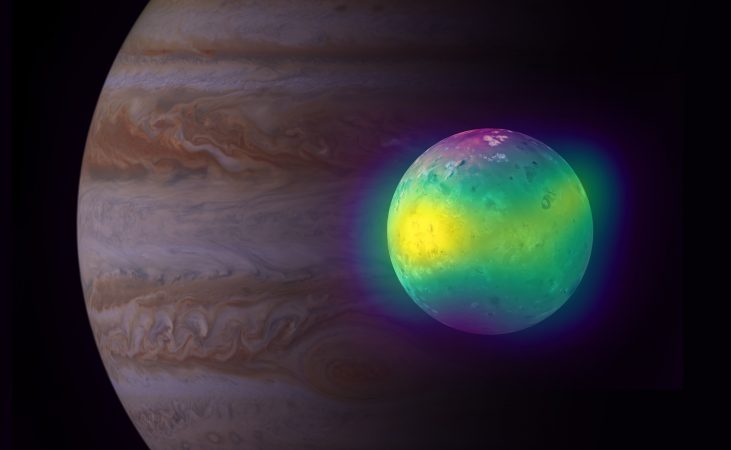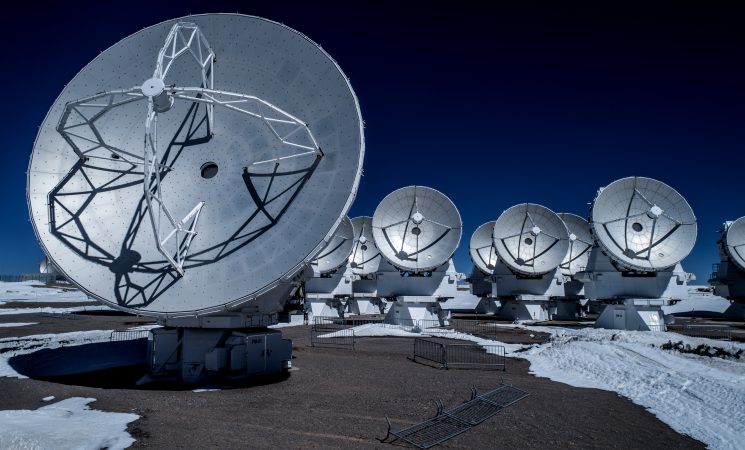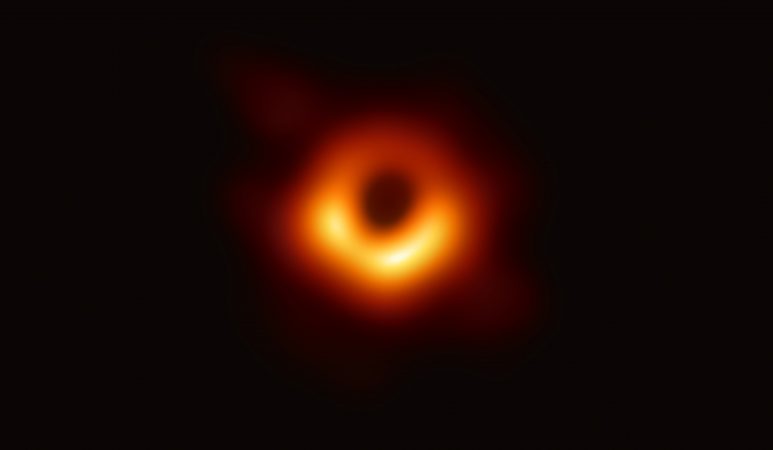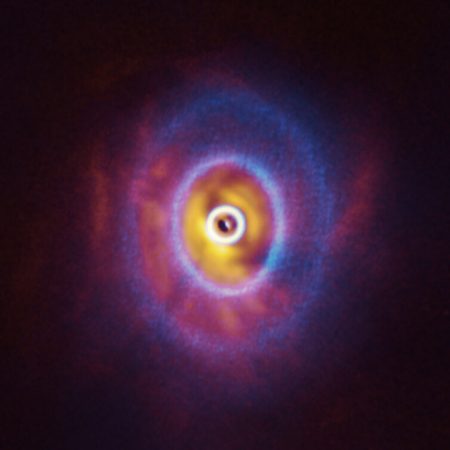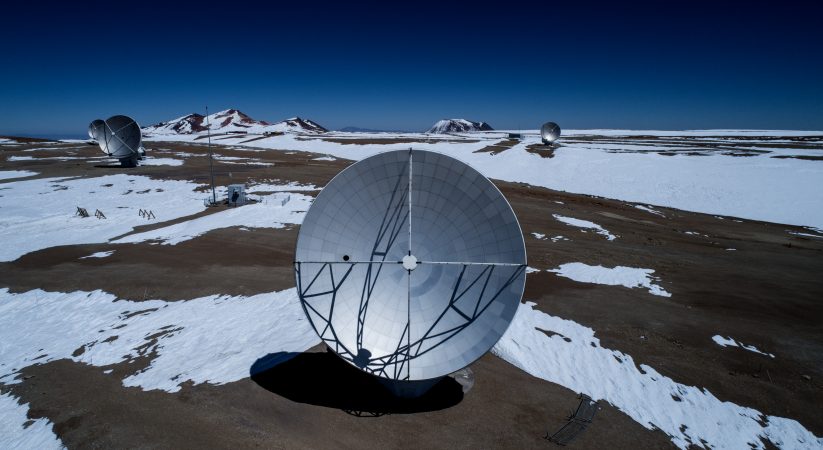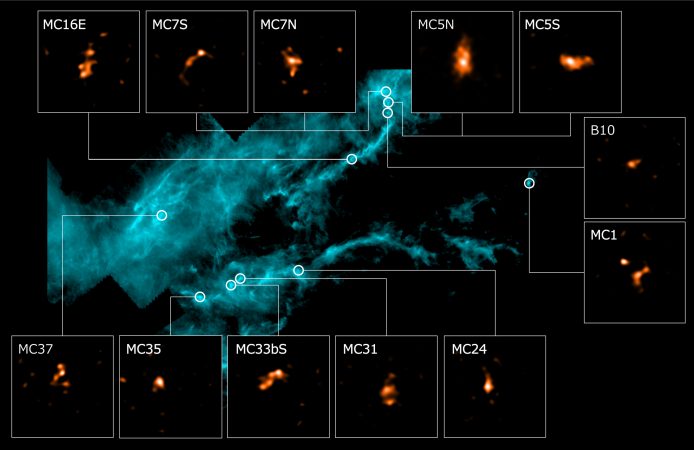2025.04.30
exoALMA Gives Astronomers a New Look at How Planets are Formed: Beyond Planet Hunting, This Survey will Reveal the Mechanics behind Planet Forming Discs

An artist’s impression of new data collected by the exoALMA large program, which studied young star systems to map the motions of gas to uncover the processes that form planetary systems and identify signs of infant planets, including gaps and rings in the dust disks around stars, swirling motions in the gas caused by a planet’s gravity, and physical changes in the disk that might signal a planet’s presence. Image credit NSF/AUI/NSF NRAO/S.Dagnello.
“The new approaches we’ve developed to gather this data and images are like switching from reading glasses to high-powered binoculars—they reveal a whole new level of detail in these planet-forming systems,” said Richard Teague, PI of the exoALMA project. “We’re seeing evidence of hugely perturbed and dynamic disks, highly suggestive of young planets shaping the disks they’re born in.” The team targeted 15 young star systems to map the motions of the gas in detail in order to uncover the processes that form planetary systems, and, in certain cases, identify the telltale signs of infant planets, including gaps and rings in the dust disks around stars, swirling motions in the gas caused by a planet’s gravity, and physical changes in the disk that might signal a planet’s presence.
Unlike traditional planet-hunting methods that look for a young planet’s direct light, exoALMA is searching for the effects planets have on their surroundings. This approach allows astronomers to potentially detect much younger planets than ever before. “It’s like trying to spot a fish by looking for ripples in a pond, rather than trying to see the fish itself,” adds Christophe Pinte, an astrophysicist at the Institute of Astrophysics and Planetology of Grenoble, Monash University, and co-PI of the exoALMA team.
The team emphasized the technical challenges involved in processing the massive amounts of data to produce such sharp images. “We developed new techniques to precisely align observations taken at different times and remove unwanted noise and distortions,” explained Dr. Ryan Loomis, a scientist with the U.S. National Science Foundation National Radio Astronomy Observatory, who led the data processing publication, “We had to carefully combine and clean up the data to reveal all the subtle details.”
These new calibration approaches and the development of tailored data-processing and analysis techniques from the exoALMA project will improve astronomers’ ability to map out the planet formation process in several key ways.
・Higher resolution and sensitivity: The observations provide an unprecedented combination of high angular (100 mas, or 14 au at the typical distances of the sources) and spectral (26 m/s) resolution data of gas emission from protoplanetary disks, allowing astronomers to detect subtle structures and motions that reveal key processes of planet formation.
・Multiple molecular tracers: By observing 12CO, 13CO, and CS emission simultaneously, astronomers can probe different vertical layers and physical conditions within the disks.
・Improved imaging and calibration techniques: The careful alignment, self-calibration, and imaging procedures developed allow for higher fidelity images with fewer artifacts, enabling more confident detection of real disk features.
・Development and validation of numerical and analytical methods: The refinement of new analysis techniques alongside comprehensive benchmarking efforts ensure all information is accurately extracted from the data while simulations offer robust predictions to be tested.
By leveraging these newly developed techniques and the exquisite dataset, the exoALMA team managed to map the density, temperature, and velocity structure of planet-forming disks in unprecedented detail. “This large program allowed for a systematic study of the 3-dimensional structure of many of these disks, providing key insights into the physical properties of the planet formation environment,” says Myriam Benisty, of the Max Planck Institute for Astronomy in Heidelberg, and co-PI of the exoALMA team. “Another exciting part of this research is that most of this work was done by researchers early in their career, who wrote 12 out of 17 of our papers,” adds Misato Fukagawa, of the National Astronomical Observatory of Japan, and co-PI of the program.
Among the most prominent results of this first release of the exoALMA program, the research team shedded light on several open questions connected to how planets form:
・The survey unambiguously demonstrated that protoplanetary disks are highly dynamic environments which exhibit a striking level of structure in their gas distributions, rivaling that of the dust counterparts.
・The extraction of rotational velocity profiles, typically achieving a precision of 10 m/s, revealed subtle departures from Keplerian rotation, indicating that pressure modulations in the disk drive the shepherding of large dust grains into the rings seen in all disks.
・Similarly to what has been achieved with the rotation curves of full galaxies to measure the mass of dark matter halos, the team managed to estimate the gravitational influence of the disk itself allowing for a novel approach to determining the mass available for forming planets, benchmarking alternative methods leveraging line fluxes.
・exoALMA provides the first insights into the key physical mechanisms at play during the earliest stages of the formation of solar system analogues by revealing dynamical interactions with companions or planets, as well as complex instabilities.
“It is through this joint analysis of the gas and dust which is shedding light on the processes which are active within a protoplanetary disk and which may be responsible for exciting the structure so commonly observed,” comments Stefano Facchini, co-PI of exoALMA based at the University of Milan.
Looking ahead, the exoALMA project promises to revolutionize scientists’ understanding of how planets interact with their natal environments, and tackle the challenge of highly asymmetric sources, as revealed by the complex 2-dimensional kinematical pattern in these disks. The first exoALMA findings are published in a series of papers in The Astrophysical Journal Letters. All of the data and images will be made publicly available to support further scientific discoveries.

Deep ALMA observations of 12CO emission from fifteen protoplanetary disks reveal a stunning range of structures in the gas morphology including gaps, rings and spirals. Image credit: Richard Teague and the exoALMA Collaboration.

Four faces of HD 135344B: the 12CO, 13CO, CS and continuum emission form this protoplanetary disk all show a complex morphology suggestive of a vortex. Image credit: Richard Teague and the exoALMA Collaboration.
About ALMA
The Atacama Large Millimeter/submillimeter Array (ALMA), an international astronomy facility, is a partnership of the European Southern Observatory (ESO), the U.S. National Science Foundation (NSF) and the National Institutes of Natural Sciences (NINS) of Japan in cooperation with the Republic of Chile. ALMA is funded by ESO on behalf of its Member States, by NSF in cooperation with the National Research Council of Canada (NRC) and the National Science and Technology Council (NSTC) in Taiwan and by NINS in cooperation with the Academia Sinica (AS) in Taiwan and the Korea Astronomy and Space Science Institute (KASI).
ALMA construction and operations are led by ESO on behalf of its Member States; by the National Radio Astronomy Observatory (NRAO), managed by Associated Universities, Inc. (AUI), on behalf of North America; and by the National Astronomical Observatory of Japan (NAOJ) on behalf of East Asia. The Joint ALMA Observatory (JAO) provides the unified leadership and management of the construction, commissioning and operation of ALMA.
Leadership Team
Richard Teague (MIT), Myriam Benisty (MPIA, Université Côte d’Azur), Stefano Facchini (Università degli Studi di Milano), Misato Fukagawa (NAOJ), Christophe Pinte (Université Grenoble Alpes, Monash University)
Collaboration Members
Sean M. Andrews (CfA), Jaehan Bae (University of Florida), Marcelo Barraza-Alfaro (MIT), Gianni Cataldi (NAOJ), Nicolás Cuello (Université Grenoble Alpes), Pietro Curone (Università degli Studi di Milano, Universidad de Chile), Ian Czekala (University of St. Andrews), Daniele Fasano (Université Côte d’Azur, MPIA), Mario Flock (MPIA), Maria Galloway-Sprietsma (University of Florida), Charles H. Gardner (Rice University, Los Alamos National Laboratory), Himanshi Garg (Monash University), Cassandra Hall (The University of Georgia), Iain Hammond (Monash University), Thomas Hilder (Monash University), Jane Huang (Columbia University), John D. Ilee (University of Leeds), Andrea Isella (Rice University), Andrés F. Izquierdo (University of Florida, Leiden University, ESO), Kazuhiro Kanagawa (Ibaraki University), Geoffroy Lesur (Université Grenoble Alpes), Giuseppe Lodato (Università degli Studi di Milano), Cristiano Longarini (University of Cambridge, Università degli Studi di Milano), Ryan A. Loomis (NRAO), Frédéric Masset (Universidad Nacional Autónoma de México), Francois Menard (Université Grenoble Alpes), Ryuta Orihara (Ibaraki University), Daniel J. Price (Monash University), Giovanni Rosotti (Università degli Studi di Milano), Jochen Stadler (Université Côte d’Azur, MPIA), Leonardo Testi (Università di Bologna, INAF-Osservatorio Astrofisico di Arcetri), Hsi-Wei Yen (Academia Sinica Institute of Astronomy & Astrophysics), Gaylor Wafflard-Fernandez (Université Grenoble Alpes), David J. Wilner (CfA), Andrew J. Winter (Université Côte d’Azur, MPIA), Lisa Wölfer (MIT), Tomohiro C. Yoshida (NAOJ, The Graduate University for Advanced Studies) and Brianna Zawadzki (Wesleyan University, The Pennsylvania State University)
Funding Acknowledgements
JB acknowledges support from NASA XRP grant No. 80NSSC23K1312. MB, DF, JS have received funding from the European Research Council (ERC) under the European Union’s Horizon 2020 research and innovation programme (PROTOPLANETS, grant agreement No. 101002188). Computations by JS have been performed on the `Mesocentre SIGAMM’ machine, hosted by Observatoire de la Cote d’Azur. PC and LT acknowledge support by the Italian Ministero dell’Istruzione, Universit\`a e Ricerca through the grant Progetti Premiali 2012 – iALMA (CUP C52I13000140001) and by the ANID BASAL project FB210003. NC has received funding from the European Research Council (ERC) under the European Union Horizon Europe research and innovation program (grant agreement No. 101042275, project Stellar-MADE). SF is funded by the European Union (ERC, UNVEIL, 101076613), and acknowledges financial contributions from PRIN-MUR 2022YP5ACE. MF is supported by a Grant-in-Aid from the Japan Society for the Promotion of Science (KAKENHI: No. JP22H01274). CH acknowledges support from NSF AAG grant No. 2407679. IH, CH and TH are supported by an Australian Government Research Training Program (RTP) Scholarship. JDI acknowledges support from an STFC Ernest Rutherford Fellowship (ST/W004119/1) and a University Academic Fellowship from the University of Leeds. Support for AFI was provided by NASA through the NASA Hubble Fellowship grant No. HST-HF2-51532.001-A awarded by the Space Telescope Science Institute, which is operated by the Association of Universities for Research in Astronomy, Inc., for NASA, under contract NAS5-26555. GL has received funding from the European Union’s Horizon 2020 research and innovation program under the Marie Sklodowska-Curie grant agreement No. 823823 (DUSTBUSTERS). CL has received funding from the European Union’s Horizon 2020 research and innovation program under the Marie Sklodowska-Curie grant agreement No. 823823 (DUSTBUSTERS) and by the UK Science and Technology research Council (STFC) via the consolidated grant ST/W000997/1. CHG and AI acknowledge support from the National Aeronautics and Space Administration under grant No. 80NSSC18K0828. CHG gratefully acknowledges the support by an LANL/CSES Student Fellow project. CP acknowledges Australian Research Council funding via FT170100040, DP18010423, DP220103767, and DP240103290. DP acknowledges Australian Research Council funding via DP18010423, DP220103767, and DP240103290. GR acknowledges funding from the Fondazione Cariplo, grant no. 2022-1217, and the European Research Council (ERC) under the European Union’s Horizon Europe Research & Innovation Programme under grant agreement no. 101039651 (DiscEvol). H-WY acknowledges support from National Science and Technology Council (NSTC) in Taiwan through grant NSTC 113-2112-M-001-035- and from the Academia Sinica Career Development Award (AS-CDA-111-M03). GWF acknowledges support from the European Research Council (ERC) under the European Union Horizon 2020 research and innovation program (Grant agreement no. 815559 (MHDiscs)). GWF was granted access to the HPC resources of IDRIS under the allocation A0120402231 made by GENCI. TCY acknowledges support by Grant-in-Aid for JSPS Fellows JP23KJ1008. Support for BZ was provided by The Brinson Foundation. This work was partly supported by the Deutsche Forschungsgemeinschaft (DFG, German Research Foundation) – Ref no. 325594231 FOR 2634/2 TE 1024/2-1, and by the DFG Cluster of Excellence Origins (www.origins-cluster.de). This project has received funding from the European Research Council (ERC) via the ERC Synergy Grant ECOGAL (grant 855130). Views and opinions expressed by ERC-funded scientists are however those of the author(s) only and do not necessarily reflect those of the European Union or the European Research Council. Neither the European Union nor the granting authority can be held responsible for them.

